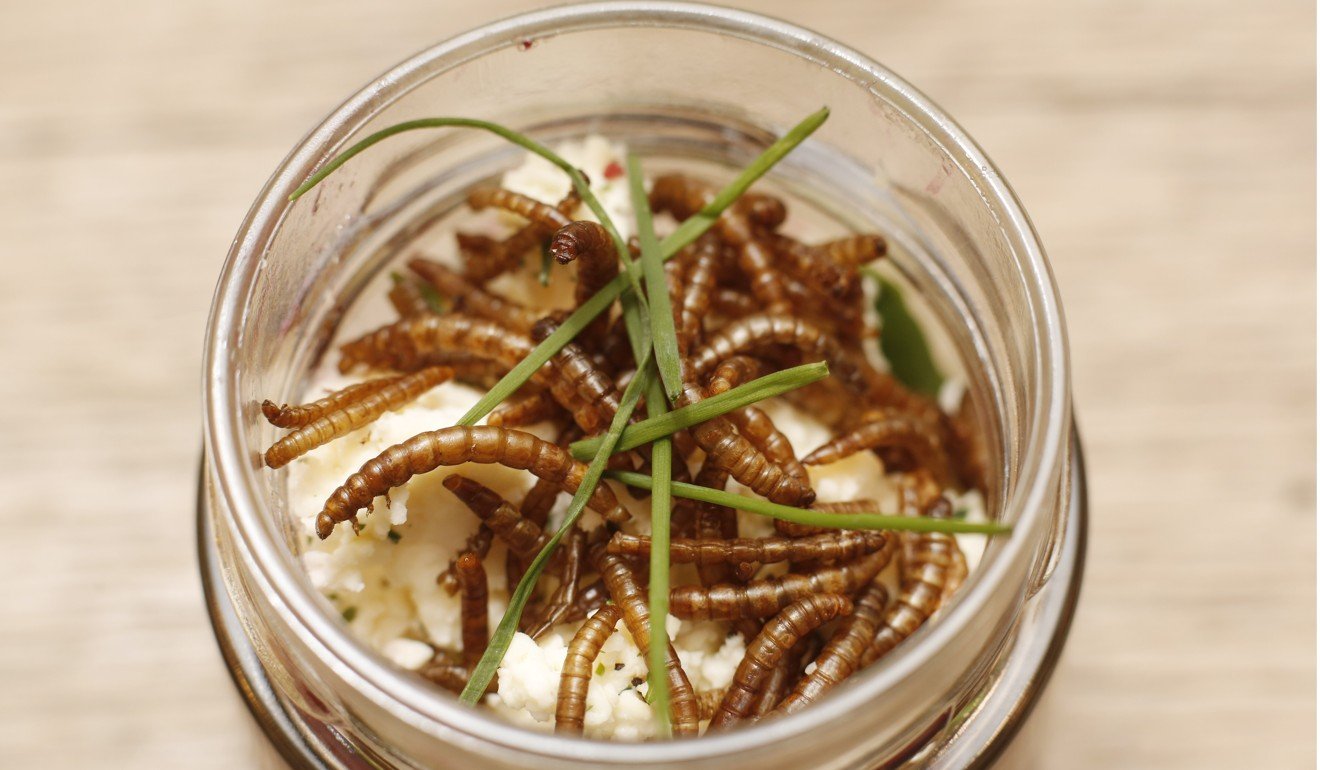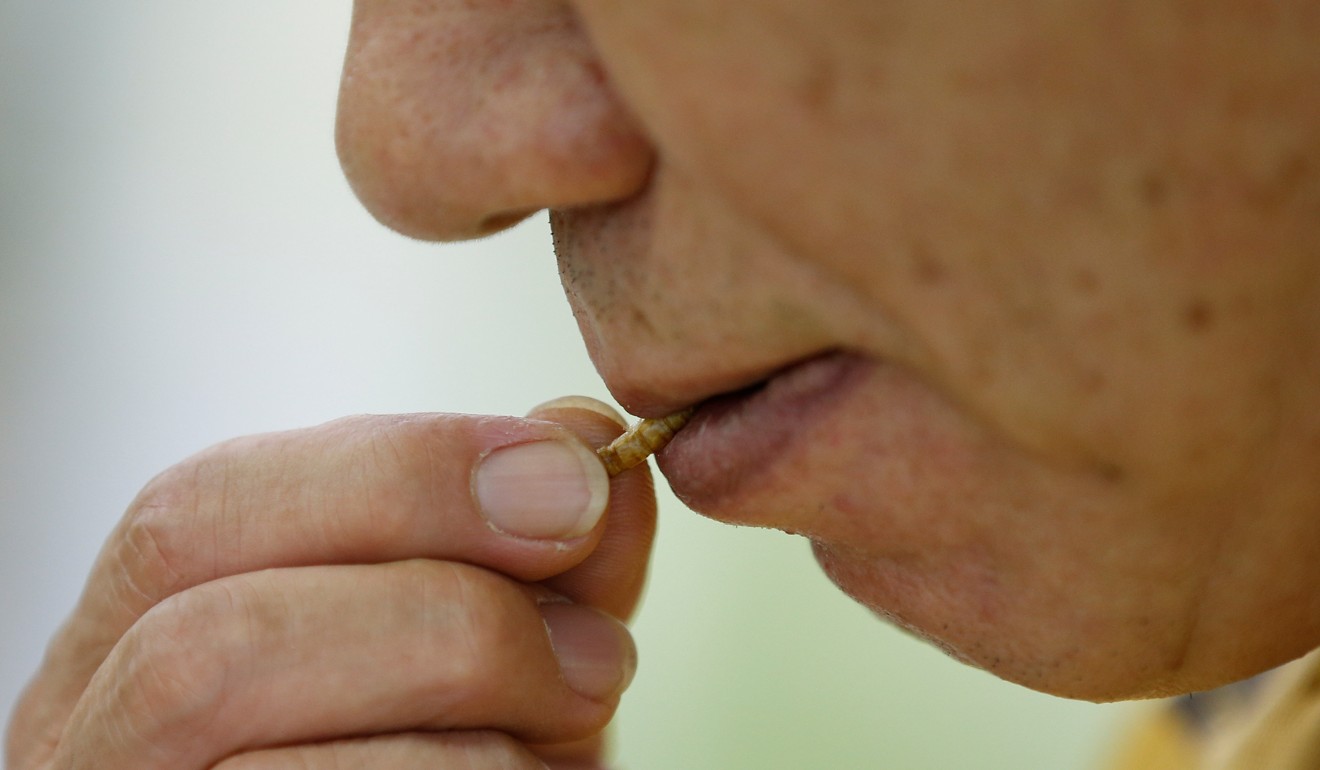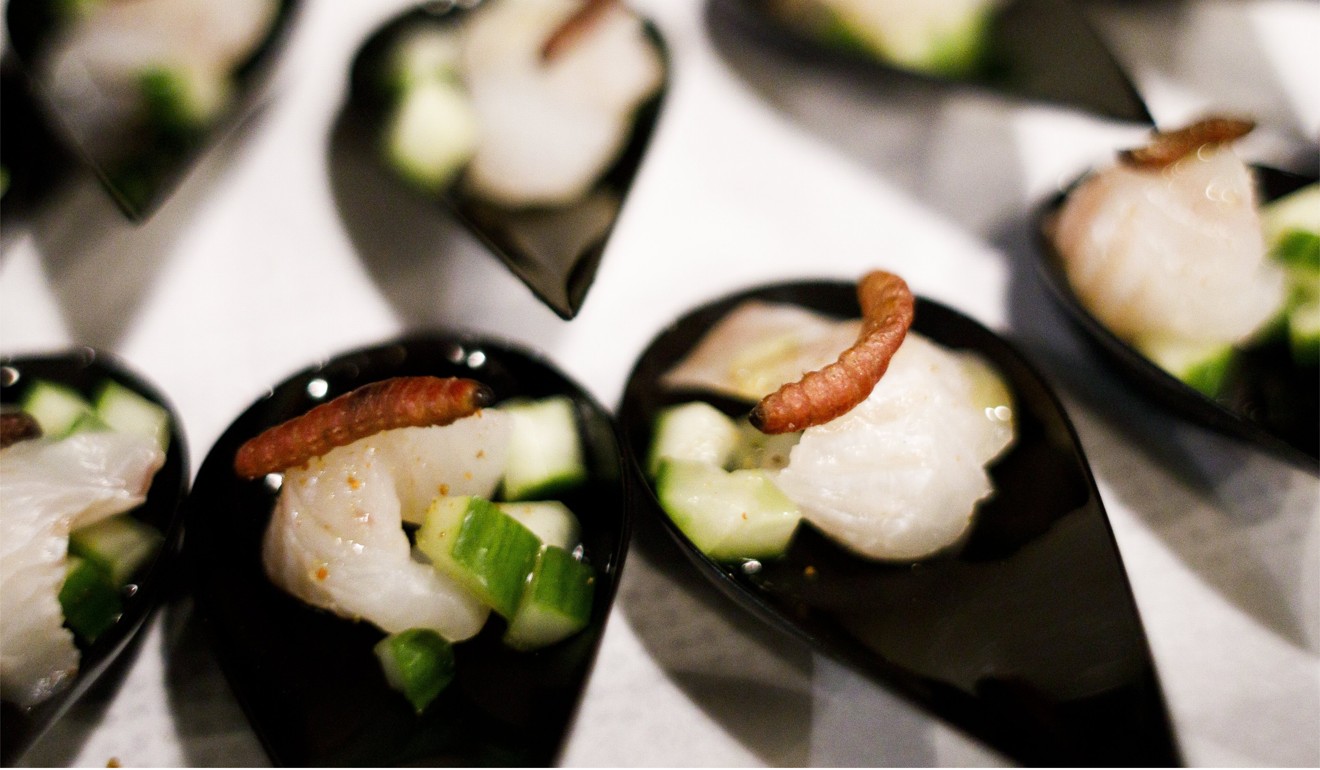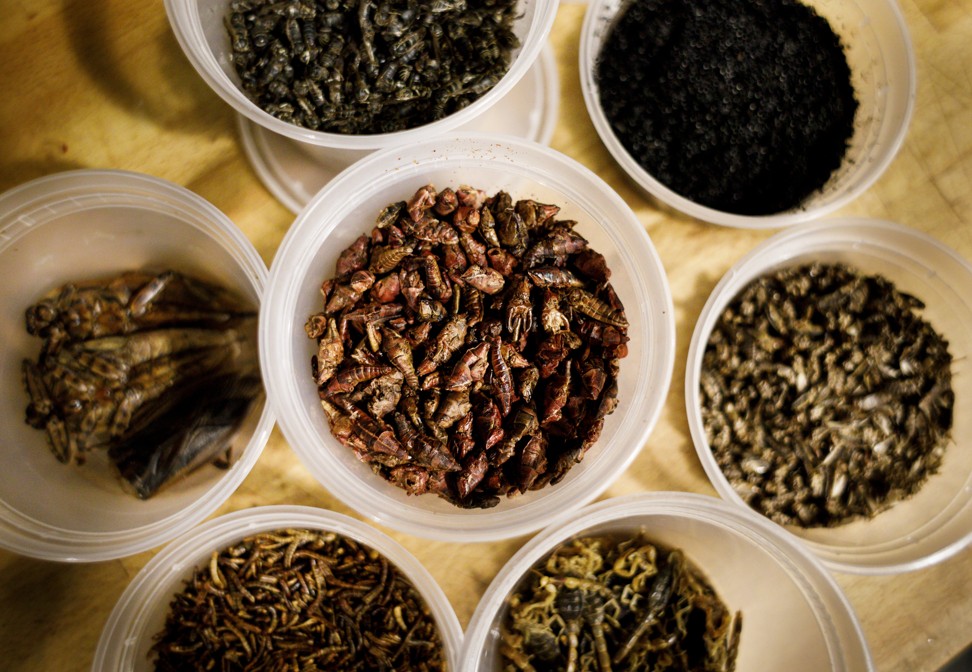
Insect-based foods: why eating bugs will be normal in 10 years, especially among young people
- With predictions that the insect market could grow significantly, it is not just scientists cooking up ways to put bugs on the menu
- From start-ups to large food and agricultural companies, products being created with insects include beer, pasta, energy bars, pancakes and granola
Fancy starting your morning with some grub granola? Or having a wrap for lunch made with insect flour? How about ending the day with stir-fried or barbecued crickets for dinner?
Despite most people balking at the idea of eating bugs, such insect-based foods could become ubiquitous in the next decade or so, according to Lars-Henrik Lau Heckmann, a biologist at the Danish Technological Institute in Aarhus.
The institute is leading the three-year project inValuable, one of Europe’s largest research programmes on industrial-scale production of insects – particularly mealworms – as a more environmentally friendly food for people and animals.
“I believe … young people will find it very natural to make pasta and wok dishes with insects as they today eat sushi,” says Heckmann, standing next to trays of mealworms stacked on top of each other on metal frames three metres (10 foot) high.

Insect farming is a small – but growing – industry globally, with bugs touted as a sustainable and cheap food that is high in protein, vitamins, fibre and minerals. Their cultivation, meanwhile, has much less environmental impact than meat.
Environmental groups such as WWF have raised concerns that growing demand for animal protein has led to more cultivation of soybeans to feed livestock, and that is causing deforestation.
The most disgusting and shocking foods from around the world
The United Nations’ Food and Agriculture Organisation (FAO) has highlighted that insects emit fewer greenhouse gases and less ammonia than cattle or pigs, and require less land and water. It also says there are more than 1,900 edible insect species.
Scientists at Tufts University in the US state of Massachusetts said in a paper this last week that meat from lab-grown insects that fed on plants and were genetically modified for maximum growth could be the “ultimate green alternative” for nutrition and flavour to meat.
Despite their name, mealworms are not worms but the larval form of the mealworm beetle that are packed with nutrients. This has typically made them a pet food for reptiles, fish and birds, and they are also used for fishing bait.

Michael Bom Frost, an associate professor at the University of Copenhagen, which is one of the other partners in inValuable, praised the use of mealworms in granola.
“We use mealworm larvae so the granola is nutty and has this tropical smell, like a cicada on a hot summer night in southern Europe,” he says, adding that pancakes made from mealworm flour were also delicious.
He says his students showcased these products at a local food market and the response had been positive.
With predictions that the insect market could grow significantly, it is not just scientists cooking up ways to put mealworm on the menu but also some of the world’s largest food and agricultural companies.
I think at some point … you have no choice but to eat these, so better to start now and make them delicious
The International Platform of Insects for Food and Feed, a lobby group, has forecast that Europe’s insect protein production could surge to 1.2 million tonnes by 2025 from about 5,000 tonnes currently.
US agricultural giant Cargill and McDonald’s are looking at insects as animal feed, while France’s Ynsect – which turns insects into food for fish, pets and plants – recently raised US$125 million to build the world’s biggest insect farm.
“There are a lot of people that want to try … especially young people,” says Davide Rossi, who runs an online shop selling edible insects in Europe, with products ranging from chilli cricket tortilla chips to buffalo worm flour.
“I think at some point … you have no choice but to eat these, so better to start now and make them delicious,” adds Rossi, whose shop 21bites also accepts payment in bitcoin.

Denmark, despite scant history of eating insects, is aiming to be a leader in this burgeoning industry with inValuable, a €3.7 million (US$4.1 million) research project.
Other partners involved in the project include enzyme producer Novozymes, equipment manufacturer Hannemann Engineering, and the National Food Institute at the Technical University of Denmark.
Jan Vaerum Norgaard, associate professor at Aarhus University’s Department of Animal Science that is also part of inValuable, says mealworms could also boost animal health.
“We know that insects have the ability to resist bacterial and fungi diseases … So, feeding the insects to pigs prone to diarrhoea may reduce the bacterial population of those pathogens,” he says.

Some researchers warn that despite the potential, there is currently an “overwhelming lack of knowledge” on basic questions of insect farming, such as suitable species, their housing and feed requirements, and managing their waste.
It was also crucial to ensure that escaping insects do not harm the ecosystem, say experts at the Swedish University of Agricultural Sciences.
Researchers with the Danish project say they want the private sector to avoid the factory farming model in which large industrial operations focus on profits and efficiency at the expense of animal welfare.
Mealworms, for example, emit low-level heat, so packing too many in a small space could lead to physical stress, Heckmann says.
In the Danish Technological Institute’s pilot production room, mealworms are kept in temperatures between 25 and 32 degrees Celsius (77 to 90 degrees Fahrenheit) and fed on spent grains and a cereal-based concoction whose exact ingredients are a secret.

But converts acknowledge that eating insects may not be appetising to many. Rossi says he didn’t think insects were worthy of a spot on the menu until he saw an FAO report on them.
“The idea that something that, for me, was disgusting, could be turned into something that’s really good, it was funny. And the idea that this market is completely new is very interesting,” he says.
Ultimately though, the success of insects as alternative proteins could come down to taste, Bom Frost says, because altruistic reasons alone would not persuade people to eat them.
“Taste is really the convincing argument in most cases when we’re eating new things,” he says.
